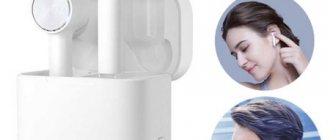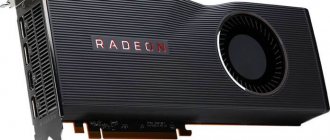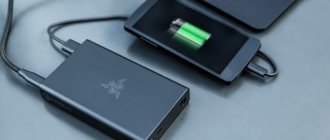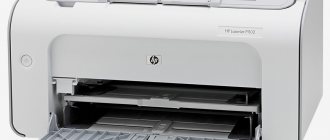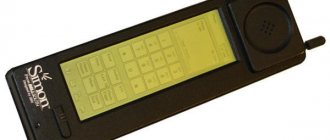Author: Andrey Fedorov
Last updated November 21, 2019
Do you like listening to music and watching movies on your computer? Then you can't do without a sound card
- 1 Sound card - what is it
- 2 Why do you need a sound card in a computer?
- 3 What does a sound card look like for a PC?
- 4 Main types of sound cards for computers
- 5 Main technical characteristics of sound cards and available connectors
- 6 How to choose a sound card for your computer
- 7 Best manufacturers
- 8 How to check a sound card on a computer and find out exactly what it costs
- 9 How to connect a sound card to a computer
Sound card - what is it?
According to the definition given in books on computer literacy for dummies or computer science textbooks, a sound card for a laptop or desktop PC means a special device that can be integrated on the motherboard or be external, used to reproduce and process the incoming sound signal. Using an audio card, you can listen to music, watch full movies or enjoy gaming. Using special programs, you can process sound or create music yourself.
FOR YOUR INFORMATION:
the process of processing audio on a computer involves editing recordings, eliminating noise, digitizing analog compositions for saving them on modern types of media, mixing music or embedding a frequency range.
Most modern sound cards are equipped with multiple outputs, including a jack for connecting speakers, a microphone or headphones.
This device may have different names:
- audio input/output device;
- sound card;
- audio card;
- audio device.
The card itself can be represented by a separate expansion card placed in the corresponding connector of the motherboard, or it can look like an integrated chipset soldered on the motherboard. It all depends on the model and manufacturer.
The sound card is the center of the entire multimedia environment
Why do you need a sound card in a computer?
Some users wonder what a sound card is for a computer. This is a necessary part that is found in every PC or laptop. Its purpose is to process the incoming audio signal and reproduce it.
Even the sounds that are built into the system and notify the user about events on the computer cannot be reproduced without the presence of this part. Also, users who play music professionally will need to buy a sound card for their computer, since it allows them to process sound and write their own works. Gamers install external sound cards on their laptops for better sound and more immersive gaming experience. The presence of connectors in the audio card for connecting external speakers or headphones makes it possible to watch movies, listen to music or have online conversations with relatives or friends using Skype or other similar programs.
The simplest sound card is a board with a set of chips and the necessary outputs
What does a sound card look like for a PC?
To understand what a sound card looks like in a computer, you can look at the photo. Also, the method of determining where exactly the sound device is hidden in the PC will depend on its type and the type of computer (desktop or laptop). How to identify the sound card in a desktop computer? This can be done by disassembling the case. On the motherboard you need to find a small chip (microcircuit), on which the name of the manufacturer's company will be printed. This method determines the sound card soldered to the motherboard.
FOR YOUR INFORMATION:
if it is built-in, but connected as a separate device, then its location will be the corresponding slot. Usually this is PCI-Express. In this case, the presence of a sound card on the computer will be indicated by the various outputs on the rear wall of the system unit.
It is more difficult to disassemble a laptop, so you can determine exactly where the sound card will be located by looking at the external connectors. Typically, portable PC models have only two outputs - for a microphone and headphones or speakers.
On the motherboard, the sound card is represented by a small chip indicating the manufacturer
The Best High-End Internal Sound Cards
Creative Sound BlasterX AE-5
The Creative Sound BlasterX AE-5 70SB174000000 sound card supports 5.1 surround sound playback. Some people call its disadvantage that the software is not very user-friendly, but crooked hands may also be to blame.
With a dynamic range of 122 dB, this model has proven itself well both in games and when listening to music, and the integrated amplifier allows you to use headphones with an impedance of up to 600 Ohms.
Some may feel that the internal discrete sound card Creative Sound BlasterX AE-5 70SB174000000 overheats a little, but the special structure of its case easily dissipates heat. And at a price of less than 10,000 rubles, this model can be considered the best discrete sound card.
BlasterX AE-5: RUB 10,220 Check on CITYLINK
PCI-E ASUS Essence STX II
The PCI-E ASUS Essence STX II 7.1, 7.1, Ret sound card requires a molex 4 pin power connection, but for its 17,000 it’s just an excellent model.
The bit rate of this card is slightly lower than that of its competitor (24 bits), but the dynamic range is higher. In addition, this model supports 7.1 surround sound playback, which gives it additional charm.
The disadvantage of the PCI-E ASUS Essence STX II 7.1, 7.1, Ret sound card is that it does not work with older versions of Windows. Otherwise, this is definitely one of the best sound cards in its category.
PCI-E ASUS Essence: ₽ 20,750 Check on CITYLINK
Main types of sound cards for computers
There are only two main types of audio devices for a PC - an external sound card for a computer and an internal or built-in one. They differ in their appearance and set of characteristics. The purposes for using these devices in the system also differ slightly.
External USB sound card
This device is a separate block, inside of which there is a set of chips responsible for converting and playing sound, connected to a computer via a USB port. Using an external device is an opportunity to significantly improve sound quality. Most often, such systems are used for laptops, since discrete audio chips cannot produce high-quality audio even on expensive models. The need to purchase an external sound card can be caused by two reasons:
- desire to get high-quality sound on a laptop PC;
- if the main sound card is broken and cannot be repaired, or the replacement procedure will be more expensive than buying a new one.
FOR YOUR INFORMATION:
Connecting speakers is not a solution to the problem of poor quality sound. This will only lead to an increase in volume, at which all the flaws and shortcomings of the built-in audio chip will become more pronounced.
Most often, inexpensive models of external sound cards do not exceed the size of a regular flash drive. More expensive and high-quality ones may resemble a hard drive. The most expensive models, the price of which can reach 10,000, are close in size to the size of the computer itself.
External sound cards are portable and have all the necessary connectors.
All external audio devices have common capabilities:
- amplification of the audio stream compared to standard computer means;
- ability to connect external speakers, microphone and headphones.
Expensive models can be equipped with various sensors, indicators, and regulators. Top models additionally have coaxial outputs and analog channels.
The advantages of external sound cards for a computer are:
- significant improvement in sound quality;
- mobility, which makes it possible to connect the device to any PC;
- a wide range of models on sale;
- the ability to adjust the main frequency parameters using buttons located on the body of the device.
Internal sound card for computer
As the name implies, this type of device for playing and processing an audio stream is a system hidden in a computer case. There is a division of internal audio cards into two categories:
Integrated . This is a chip that is soldered directly onto the board. This solution is the most budget option. You should not expect high-quality sound from such a system, although more expensive motherboards may have high-quality chips installed. The advantage of this type is that it reduces the overall cost of the computer. But such an audio device has many more disadvantages:
- after being placed on the motherboard, the chip begins to be affected by electrical noise, which distorts the analog signal;
- lack of its own processor, which leads to increased CPU load;
- inability to connect powerful audio systems.
Integrated cards are soldered into the board and have connectors placed on the back wall of the PC for connecting
Discrete . This type is a separate board that is installed in a PCI slot. Discrete cards are considered the oldest options. There are many manufacturers who specialize in producing discrete options.
A discrete audio card is a separate card installed in a PCI-Express slot.
The use of this type has a number of advantages:
- the presence of its own sound processor, which reduces the load on the CPU and does not slow down the PC;
- producing higher quality sound;
- the ability to connect powerful external audio playback devices;
- the presence of a disk containing drivers for the sound card for Windows 7 or another operating system.
The best external sound cards of the year
ESI U22 XT
By and large, this model is an external analogue of the widely used ESI MAYA 44ex sound card. There are only two physical channels independent of each other, but there are also two additional virtual ones - they are used for Internet broadcasting. The interface of this equipment is quite interesting, especially since it is one of the most budget-friendly. The body is made of metal, has a lacquered coating that looks strongly reminiscent of copper - a rather original design solution. One of the main achievements of this device is the presence of various knobs for line output and headphone output. As users note, this is a very convenient and correct approach.
Another important point that the developers added here is the presence of a hardware FRONT-BACK switch, which allows you to calculate whether to use the front guitar plus microphone inputs or digitize a stereo RCA signal from the input on the rear panel, and it does this automatically . For such a budget product, there are balanced TRS outputs. A separate network adapter is not required when connecting this product, just as it does not require mains power. You just need to connect it to a personal computer, and it can also work with tablets and phones thanks to support for UAC1 mode.
More: Top 10 best external batteries, how to choose a good Power Bank
Advantages:
- Reasonable cost;
- Convenient location of both inputs and all controls;
- Very attractive appearance;
- Easy to connect and use.
Flaws:
- The volume knobs are smooth and not very comfortable to use;
- The quality of the recorded sound could have been better.
TASCAM US-2×2
This is a fairly easy-to-use model that has two inputs and outputs. The product was released into wide distribution back in 2014, but the performance characteristics turned out to be so good that the product is still widely popular, and it also has an excellent price-quality ratio. The design is equipped with two Mic/Line inputs that work with XLR/TRS connectors - this allows you to use even condenser microphones. Moreover, each of them can be used to connect instruments - the switch is located on the front panel, so you can safely connect an electric or bass guitar to this external sound card.
The headphone output is a classic 6.3 mm, there are two balanced line outputs of the same type. The device supports audio recording and playback in 1624-bit mode, the frequency range is from 44.1 to 96 kHz. As users note, this sound card provides excellent sound, distortion and noise are minimal. Such indicators were largely achieved thanks to the installation of two Ultra-HDDA preamplifiers at once. On the front panel you can find the main controls for this product; the signal levels for the headphone output and line outputs are adjusted separately. The device connects to a USB 2.0 connector, setting it up is very simple. This equipment also has MIDI input/output, which allows you to connect a wide variety of devices and musical equipment, such as a synthesizer or drum kit. The sound card is perfectly compatible not only with laptops, but also with personal computers, including MacOs, and works well with other Apple products - iPad. The body is made of high quality aluminum and has a stylish industrial design. The overall dimensions are compact, the weight is small - just a little more than 1 kg. The side panels can be removed.
Advantages:
- Installed high-quality preamplifiers for microphones;
- Musical instruments sound at a professional level;
- Compact product;
- The assembly is of high quality, not a single part of the case is loose;
- Attractive appearance.
Flaws:
- Sometimes you have to struggle with drivers on your computer.
Focusrite Scarlett 2i2 2nd Gen
This is a new generation of external sound cards, the quality of which reaches a fundamentally new level. Under the metal casing you can find new developments in microphone preamplifiers and converters. The device supports sampling rates up to 192 kHz, the delay of the audio signal has been minimized, and the set of software included with this sound card has also been increased. The body is made of metal and looks quite elegant, the knobs are metal and corrugated, which helps the operator to fine-tune the product and get the sound of the highest quality and clarity.
Microphone preamps are equipped with linear gain variation. The converters have a dynamic range of up to 109 dB. Audio latency is as low as 2.74ms, allowing all effects to be revealed literally in real time, as well as during recording or monitoring. Analog circuits are equipped with special protection that does not allow devices to fail in the event of voltage surges. Here is the Focusrite Creative Pack software, which additionally contains 12 plug-ins.
Advantages:
- Small overall dimensions;
- Slight delay in sound transmission;
- High-quality sound when recording voices and instruments;
- Almost complete absence of noise and other recording defects.
Flaws:
- It happens that the sound card starts to freeze, but this happens quite rarely.
Audient iD14
These are products of a British company that develops audio equipment, in particular microphone preamplifiers. This equipment is compact in size, so you can work with it even on the road. It is housed in a highly durable metal case and has rubberized feet that prevent slipping even on perfectly smooth surfaces. This sound card is ideal for use in a home recording studio. There is an instrument input, as well as two line and microphone inputs. In total, this design has ten inputs and four outputs, supporting sampling rates up to 96 kHz. The set of functions, according to the manufacturer, is universal, which ensures excellent sound quality that is almost impossible to distinguish from full-size devices.
The microphone preamps are Class A, which helps achieve truly world-class sound. You can directly connect an electric guitar, bass guitar and other similar instruments, even the most basic ones equipped with a simple pickup. The card has a DSP mixer with minimal latency. Manufacturers have installed the iD ScrollControl mode here, thanks to which you can work with iTunes libraries and change various plug-in parameters. The device is powered from a USB connector or from an external adapter supplied with the equipment. The adjustment knobs are made of ribbed aluminum.
Advantages:
- For its price, the sound is simply magnificent;
- The functionality is varied, but there are no special features;
- The software works stably;
- Very comfortable knobs for adjusting parameters.
Flaws:
- The headphone output is not very loud.
6. Creative Sound BlasterX G5
One of the smallest models in our entire review, however, the purpose of this device is quite broad; for direct use, neither an adapter nor any other additional elements are required. The equipment can work with USB 2.0 and 3.0 connectors; it provides high quality sound for a personal computer, laptop, and various consoles such as Xbox or Sony Play Station. Built-in microphones and other similar additional functions are not provided here, which could not but affect the cost, naturally, to a lesser extent. Dimensions and weight are small.
More: TOP 10 best Chinese tablets, how to choose?
The product has the shape of a prism, the body is plastic - smooth matte on top with small inclusions stylized as polished metal. The front side is made of glossy plastic, which attracts a lot of fingerprints. It has only two outputs - one for connecting a microphone, the second for headphones. In the central part there is a volume control, which is also stylized as metal. On the underside there is a velvety polyurethane pad that allows the device not to slip on the surface. Both connectors can be used for both headphones and microphones - if desired, two pairs of headphones can be connected to the card at once. All capabilities of the device can be used only if it is connected to any device.
Advantages:
- Very compact overall dimensions;
- High performance;
- There is everything you need for comfortable use;
- Good build quality;
- Long service life.
Flaws:
- Background noise may occur when two pairs of powerful speakers are connected.
BEHRINGER UMC22
The functionality is not too wide - it is limited to only two inputs so that two external sound sources can be connected. They are the same - for XLR/6.3 mm jack. However, they have different purposes of use: the first can be used both for connecting instruments and microphones, including condenser ones, which provide high quality sound, especially vocals. With their help, extraneous noise is well suppressed. This connector is equipped with a Midas brand preamplifier, although many users note in their reviews that the sound quality is very mediocre. In addition, it is possible to send a 48 V phantom load to the first channel. This can be done using a special switch located on the rear panel of the device.
In headphones, two types of signals can be recognized - processed, coming directly from a personal computer, and original, which comes from a musical instrument. The latter function is provided thanks to Direct Monitor technology. In order to adjust the volume of both channels, only one knob is provided - this point is considered by many users to be a disadvantage. The audio signal is converted from analog to digital and in reverse order in 24-bit quality, its frequency is 48 kHz. This allows you to use the sound card for professional audio recording. Small dimensions make it easy to use in a small studio and even when traveling. The case is made of metal with additional stiffening ribs - this allows you to well protect the filling of the device from various types of mechanical damage.
Advantages:
- Reasonably priced;
- Simplicity and ease of use;
- There is a direct monitoring button;
- It is possible to support ASIO drivers.
Flaws:
- During sound recording, clicks may appear due to a weak processor and overload.
4. M-Audio M-Track 2×2
The device is equipped with an aluminum case, characterized by a very reliable and solid assembly. All elements are tightly fitted to each other, no extraneous sounds appear even with strong pressure. The sound card is quite stable. The model's interface is well thought out - all controls are located in such a way that they are at hand at all times, but do not interfere with each other. The handles have a smooth stroke, which allows for fairly fine adjustments. The outputs for headphones and monitors are separate, and there is hardware monitoring of the inputs. In particular, with the help of this sound card you can listen to the dry sound of a guitar and combine it with sound that has already been processed. Four-segment pikmmeters can also be found in the design.
The back side is quite simple. It has a combined output, as well as outputs used to connect monitors and a USB-C power socket. The minimum audio transmission delay is 64 samples, which means the sound is transmitted almost in real time. The card allows you to provide +48V power for microphones, which is a definite advantage. The sound interface is at a decent level, even heavy and powerful headphones convey sound well and have a decent volume reserve. The timbres are transmitted evenly, the bass lines are not overwhelmed and do not tend to stand out. Inputs are noise-free and do not embellish or discolor the sound, resulting in the highest fidelity.
Advantages:
- Good sound quality;
- Reasonable cost;
- Beautiful appearance;
- Excellent ergonomics.
Flaws:
- The USB-C connector is weak and may begin to lose contacts over time.
Zoom UAC-2
In third place in our ranking of the best external sound cards is a universal high-speed model, which has two channels and is designed for use on both a computer with the Microsoft Windows operating system and MacOs. Thanks to this device, you can take the quality of the resulting sound to a fundamentally new high level. The model is connected via a USB 2.0 or 3.0 port; it can work not only with desktop computers or laptops, but also with tablets, including those from Apple. When developing the device, USB 3.0 SuperSpeed technology was used, which ensures the transmission of an audio signal with minimal delay.
More: TOP 10 rating of the best airbrushes, how to choose a small paint sprayer
You can connect any external sound source to this product - a musical instrument (including percussion), a microphone, and so on. The UAC-2 interface located here allows you to conduct media presentations, podcasts, and game broadcasts in real time. The data flow is stable, there will be no signal jitter effect, so there is no need to additionally connect external sources that would act as the main clock generator. On the front panel you can see dual inputs of a combined XLR/TRS type, to which various signal sources are connected. It is permissible to connect various types of amplifiers or speakers equipped with their own power source to the outputs. There's also a quarter-inch stereo jack equipped with a dedicated volume control. There are liquid crystal indicators that make setting up this equipment more accurate and faster.
Advantages:
- Compact dimensions;
- Good build;
- Connects without problems;
- Functions normally;
- Contacts all sources of sound extraction;
- There is built-in signal processing and the ability to record via Loopback.
Flaws:
- It does not turn off with the computer - for this you will have to configure the BIOS.
2. STEINBERG UR22 MKII
This model is located in the middle price category and has a good price-quality ratio. First of all, users note the compact overall dimensions of this product - it will not take up too much space. There are no problems connecting this model to a personal computer and other devices necessary for work. The equipment is perfect for both beginning sound engineers and those more advanced in their field. All elements necessary for normal use of the equipment are located on the front panel of the structure. Here you can find two XLR combo inputs, which are equipped with volume controls, and LEDs are located above them. Each of these channels is equipped with a preamplifier. There is only one headphone input.
On the back there are Jack connectors, MIDI input and output, as well as a jack for connecting a USB power cable. The device can be connected to a tablet, and the sound quality will be no worse than when working with a personal computer. Material recorded using a tablet can be transferred via Cubasis LE to a computer or laptop, and then continue to work with it. The design is versatile, therefore, it can be used not only for sound recording, but also for live work, for example, at concerts. This sound card is equipped with two channels, allowing you to record instruments with 24-bit/192 kHz audio quality. As users note, the model exceeded all, even the most daring, expectations.
Advantages:
- Good functionality;
- Ready to use immediately after removal from the package;
- Provides excellent sound quality;
- Minimum time delay.
Flaws:
- The adjustment knobs are small and not very convenient to use.
ROLAND RUBIX24
The leader in our review of the best sound cards of this year was a model from two years ago, but the developers have still not been able to release any design that would surpass this device in performance characteristics, service life and build quality. According to the manufacturers, this sound card is designed for fast and comfortable sound processing for modern professional producers, sound engineers and musicians. The main advantages of this equipment are compactness and good sound - even at home you can provide almost studio sound. The transmission delay here is minimal, all played melodies are transmitted almost in real time. The product interface is equipped with two quarter-inch XLR combo inputs, two balanced TRS line outputs, and two additional outputs.
The sound is clean and transparent, there is practically no noise. The drivers are very well designed, there is a built-in compressor and limiter. Loopback makes it very convenient to manipulate the routing of the signal coming out of a personal computer, which will be quite useful for streamers. The delay is only 3 ms for both input and output. You can connect an iPad to your tablet, but you will first need to purchase a special adapter. There is no control panel, and all the main controls are located on the body, which is also quite convenient.
Advantages:
- Drivers are installed instantly on any operating system, starting from Windows 7 and higher;
- A huge number of possibilities;
- Minor time delay;
- Four output channels at once;
- Two microphone inputs.
Flaws:
- High price.
ROLAND RUBIX22, RUBIX24, RUBIX44 - a detailed review of the new ROLAND sound cards
Main technical characteristics of sound cards and available connectors
The main parameter that determines the effectiveness of a sound card is high-quality audio playback without unnecessary interference and distortion. Most devices have digital and analog inputs.
FOR YOUR INFORMATION:
in practice, it turns out that the analog input/output produces interference when playing sound. But professional musicians believe that analog sound has a “warmth” that digital cannot provide.
Signal converter
Since a computer is a digital device and sound is an analog physical phenomenon, the use of special conversion tools is required. On a sound card, a separate chip called a DAC, or digital-to-analog converter, is responsible for this. The conversion process occurs in two stages:
- first, signal samples that coincide with the sampling frequency are isolated from the data stream;
- Then, by interpolation or smoothing, a time-continuous analog signal is formed.
There is also an inverse conversion technique, when an analog stream is received at the input, which needs to be made understandable to the computer, which means representing the signal into a set of numbers.
Scheme of operation of DAC and ADC
DAC capacity
Another characteristic that is closely related to conversion is the bit depth of the digital-to-analog converter. Bit depth is the number of bits of the input code or the minimum number of units of digital information or bits. Typically, a binary number representation with a bit width greater than 16 is used.
Increasing this indicator is required to expand the dynamic range.
To obtain sound with minimal distortion, you need to use a DAC with the maximum number of bits. Higher conversion parameters corresponding to 24 or 32 bits are used during audio signal processing. For playback, 16-bit is usually sufficient.
Sampling frequency involves equalizing the converted signal by reducing the time intervals of individual samples
Sampling frequency
Since during conversion the signal is recorded at a certain number of samples, we can talk about time sampling. A situation may arise that these segments will be located at a large interval from each other, which will lead to loss of information and sound distortion. Therefore, for correct audio conversion it is necessary to take samples at the maximum frequency.
The limit is the speed of the DAC. Also, the greater the number of fixed segments that pass through the processor, the more memory must be allocated to store data. A signal that has the form of discrete samples can be converted into an infinite one only if the interval is limited to half the period of the highest signal oscillation in the spectrum. This is why sound card standards use filters that limit the maximum sampling rate.
Traditionally, all connectors are color coded
Interfaces
Almost every sound card for a computer is equipped with a certain set of ports or connectors that are used to connect microphones, headphones, external speakers and other devices. The most common inputs/outputs are the following connectors, differing in color:
- pink – for microphone;
- blue – linear output;
- green – connector for connecting speakers or headphones;
- black – for surround sound system;
- gray – when using a 7.1 system, when you need to connect side speakers;
- orange – for connecting a center channel or subwoofer.
Additionally, more advanced models may have an optical output or SPDIF, a coaxial connector that allows for better sound.
The choice of sound card should primarily be determined by its purpose.
Best Budget Sound Cards (USB)
Orient AU-03 USB to Audio 3.5 Jack
The external sound card Orient AU-03 USB to Audio 3.5 Jack surprised me with its good sound, but the build quality was a bit let down.
This model is unlikely to be suitable for professional audio recording, since it does not have a high maximum sampling frequency and produces only 48 kHz. But there is practically no extraneous noise observed during its operation thanks to an SNR of 93 dB.
The 16-bit sound recording quality of the Orient AU-03 USB to Audio 3.5 Jack is also quite acceptable. But in general, given the price of around 200-300 rubles, this is one of the best sound cards in its category.
Price: ₽ 300
Orient AU-01S Black
The Orient AU-01S Black sound card differs from its competitor in its more compact size, but the sound quality is worse.
In general, the technical parameters of these two Orient models are almost identical. The 16-bit C-Media chipset does a good job of processing audio, but the build quality of this sound card is not perfect.
The external sound card Orient AU-01S Black can sometimes produce noise due to the poor quality of the contacts, but overall it produces very good results for its price (about 400 rubles), and can be considered the best budget sound card.
Price: ₽ 395
How to choose a sound card for your computer
When choosing the optimal sound card for a PC, you should pay attention not only to the listed characteristics, but also imagine the purposes for which it will be used, and take a closer look at some additional parameters:
- EAX technology support . This is an analogue of DirectSound3D three-dimensional sound, which is used for sound cards. The use of such a technique is important in computer games, as it allows you to achieve the effect of presence. This technique is also used for reflection and reverberation of sound;
- presence of ASIO. A protocol that is used to transmit an audio signal with minimal delays, which is important when using editors to record audio. This technology is also implemented at the hardware level;
- Midi . A midi interface is required for musicians who intend to use a computer to create their own arrangements. These connectors are required to connect synthesizers or musical keyboards.
Also, when choosing the optimal card, you should not fall for marketing tricks, since very often the indicated indicators are exaggerated. It is worth paying attention to the DAC manufacturer. The best companies are Ti-Burr Brown and Wolfson. Another indicator of quality is the serial number of the converter. The larger the number, the more modern the model.
FOR YOUR INFORMATION:
It is better to choose cards on which all chips are made by the same manufacturer, which will avoid conflicts at the hardware level.
Asus Strix Raid DLX is the best value for money among sound cards, according to users
The best manufacturers
ASUS sound cards
One of the market leaders for these products is the Taiwanese company ASUS, which is known to a wide range of users for its mobile products - laptops and phones. The manufacturer’s line of audio devices is represented by both budget models (Xonar DG, cost – 2,200 rubles) and premium products, which, according to users, produce almost ideal sound (Strix Raid DLX, cost – 15,000 rubles).
Creative sound cards
Sound Blaster ZX is already the sixth reincarnation of a sound card from Creative Labs.
Next in the ranking of the best manufacturers is Creative Labs, which specializes in the production of hardware and software. One of the most popular models is the Sound Blaster, which is already experiencing its 6th rebirth. The top model in the line is the Sound Blaster ZX, which has an original external design and a remote unit for connecting peripherals and controlling sound parameters. The cost of this card starts from 9,000 rubles.
Sound Blaster ZX
Other companies
Asus and Creative are the undisputed leaders. Also on the sound card market there are companies such as LynxStudio, which produces mid-price audio devices, C-Media, M-Audio. A distinctive feature of the latest brand’s audio devices is the products’ focus on recording sound at home. This is expressed in equipping the board with a line input for a guitar or microphone.
Using Device Manager, you can not only see which card is installed, but also update the driver
TOP products
Let's look at the best sound cards in their segment.
Best sound card for recording audio instruments
Steinberg UR22
External card Steinberg UR22 with USB 2.0 connection. Among the interesting features of the device are a metal case, good support for operating modes reaching 24bit 192kHz, combined XLR/TRS connectors, and the presence of MIDI input/output. In fact, these are professional capabilities at a low price. The cost of the card is about 14 thousand rubles.
Price: RUB 13,990
Best for recording and home studio
BEHRINGER U-PHORIA UMC204
The external card BEHRINGER U-PHORIA UMC204 with a USB 2.0 interface has 4 analog audio outputs. The card allows you to get very good sound when recording in a home studio. Allows you to connect 2 microphones or 2 guitars, for example. A simple, reliable and functional semi-professional card at a price of 7 thousand rubles opens up new vistas in terms of sound quality.
Price: ₽ 7,000
Best External USB Sound Card
Creative X Fi Go! Pro
External card Creative X Fi Go! Pro with USB 1.1 interface is suitable for laptops without a PCI-e x1 slot. Thanks to the card, you can get beautiful, clear sound without hiss and other interference with excellent detail. For just 2,500 rubles, you can open up new sound horizons on your laptop.
Price: ₽ 2,590
Best Budget Cards
Lexicon Alpha
The Lexicon Alpha card with a USB 1.1 interface at a price of 3 and a half thousand rubles provides clear, powerful sound without noise, even at minimal latency. In terms of sound quality, depth and liveliness of sound, it surpasses many cards in this segment. An excellent budget option for recording voices and instruments.
Price: ₽ 3,700
PreSonus AudioBox IOne
PreSonus AudioBox IOne, priced at 9,000 rubles, is a true revolutionary in the field of sound. Lightweight, compact card works with iPad. A great option for a home studio.
Price: ₽ 9,000
The best expensive cards
Apogee Duet 2
Apogee Duet 2 is a professional, convenient computer DAC designed to work with professional equipment. Compatible with Apple OS. Impresses with smooth, detailed, powerful, dynamic, natural sound. The user receives live studio sound. Has 4 channels of DAC so the speaker and headphone outputs can play different things at different levels.
Price: ₽ 53,000
MOTU 4pre
MOTU 4pre, priced at 46,000 rubles, is a professional sound card that allows you to work via both USB and FireWire interfaces. Ideal for recording and mixing thanks to a large number of different inputs and outputs. You can simultaneously connect several headphones, monitors, instruments, and a microphone. Everything can work as a mixer without a PC.
Price: ₽ 45,900
How to check a sound card on a computer and find out exactly what it costs
The easiest way to find out the sound card on a computer is to use the Windows Task Manager. The “Sound, video and gaming devices” item will show all audio devices installed on a specific PC.
Driver for sound card
You can also try to update the sound card driver through Device Manager if you are experiencing problems with sound. This will be useful for budget models that do not come with a special disk with installation software.
The sound card is installed in one of the PCI-Express connectors, which are located on the motherboard
Best Budget Internal Sound Card
ATcom PCI 4CH AT10715
The ATcom PCI 4CH AT10715 sound card can please you with the presence of 4 output analog channels and a relatively low price - 400-500 rubles.
The 16-bit c-media 8738 chipset copes well with the task assigned to it, and the frequency of 48 kHz allows you to reproduce any sounds with high quality.
ATcom PCI 4CH AT10715 is fully compatible with Windows and does not require additional settings. And if you consider that this model is almost silent and has virtually no noise even at high volumes, it can be considered the best budget sound card.
Price: ₽ 551
How to connect a sound card to a computer
After purchasing a brand new audio card, the question may arise about how to install a sound card on a computer. When using an external device, you only need to plug the plug into the USB socket, and then install the necessary drivers for proper operation. If you are using a discrete card, then you will need to remove the side cover of the system unit and carefully place the board in the appropriate slot. A latch is used for fixation. After physical installation, you need to turn on the PC and install the drivers. It is quite possible that the system itself will detect the new device and automatically install it.
Share Tweet Email Pin



